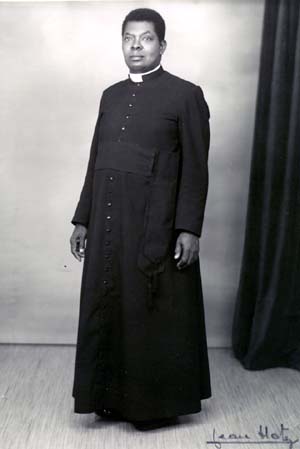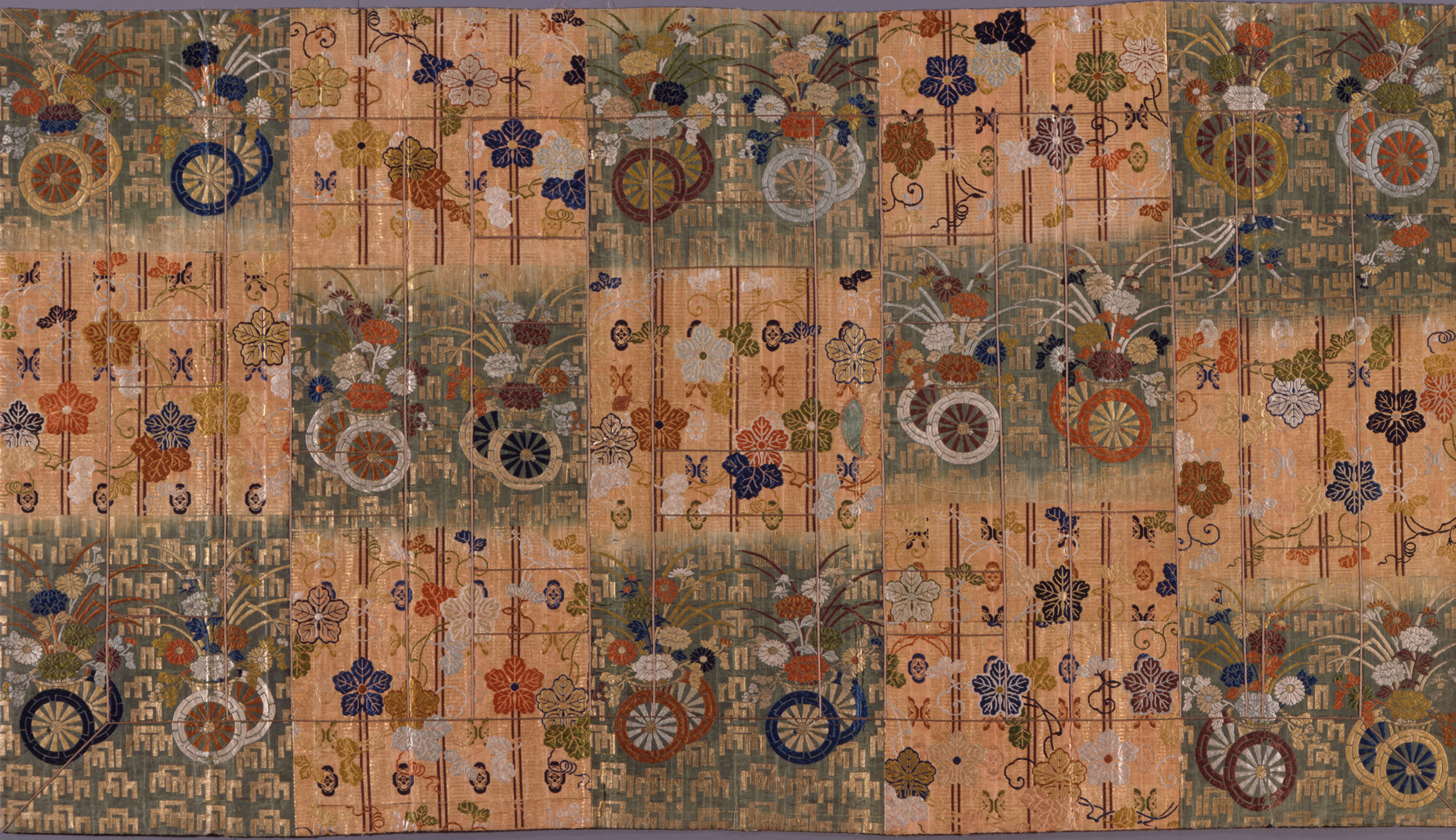|
Cassock
The cassock, or soutane, is a Christian clerical clothing, clerical coat used by the clergy and Consecrated life, male religious of the Oriental Orthodox Churches, Eastern Orthodox Church and the Catholic Church, in addition to some clergy in certain List of Protestant denominations, Protestant denominations such as Anglicanism, Anglicans and Lutheranism, Lutherans. "Ankle-length garment" is the literal meaning of the corresponding Latin term, . It is related to the Religious habit, habits traditionally worn by nuns, monks, and friars. The cassock derives historically from the tunic of classical antiquity that in ancient Rome was worn underneath the toga, and the Chiton (garment), chiton that was worn beneath the himation in ancient Greece. In religious services, it has traditionally been worn underneath vestments, such as the alb. In the West, the cassock is little used today except for religious services, save for Traditionalist Catholicism, traditionalist and those other C ... [...More Info...] [...Related Items...] OR: [Wikipedia] [Google] [Baidu] |
Clerical Clothing
Clerical clothing is non-Liturgy, liturgical clothing worn exclusively by clergy. It is distinct from vestments in that it is not reserved specifically for use in the liturgy. Practices vary: clerical clothing is sometimes worn under vestments, and sometimes as the everyday clothing or street wear of a priest, religious minister, minister, or other clergy member. Eastern Orthodox Church, Eastern Orthodox clerical clothing is a subset of a monk's Religious habit, habit. In modern times, many Christianity, Christian clergy have adopted the use of a shirt with a clerical collar; but the use of clerical clothing is most commonly among Catholic Church, Catholic, Anglican, Oriental Orthodox, and Eastern Orthodox clergy. Catholicism Already in the fifth century, clerics were directed to dress according to their profession and should not wear decorated shoes or vestments. The Synods of Aachen (816–819), council of Aachen in 816 specified that, following the teachings of the Church Fat ... [...More Info...] [...Related Items...] OR: [Wikipedia] [Google] [Baidu] |
Vestment
Vestments are Liturgy, liturgical garments and articles associated primarily with the Christianity, Christian religion, especially by Eastern Christianity, Eastern Churches, Catholic Church, Catholics (of all rites), Lutherans, and Anglicans. Many other groups also make use of liturgical garments; among the Calvinism, Reformed (Calvinist) Churches this was a point of Vestments controversy, controversy in the Protestant Reformation and sometimes since, in particular during the Ritualism in the Church of England#Ritualist controversies in the 19th century, ritualist controversies in the Church of England in the 19th century. Origins In the early Christian churches, officers and leaders, like their congregations, wore the normal dress of civil life in the Greco-Roman world, although with an expectation that the clothing should be clean and pure during holy observances. From the 4th century onward, however, modifications began to be made to the form of the garments, and, as secula ... [...More Info...] [...Related Items...] OR: [Wikipedia] [Google] [Baidu] |
Clerical Collar
A clerical collar, Roman collar, clergy collar, or, informally, dog collar, is an item of Christian clerical clothing. Overview The clerical collar is almost always white and was originally made of cotton or linen but is now frequently made of plastic. There are various styles of clerical collar. The traditional full collar (the style informally described as a ''dog collar'') is a ring that closes at the back of the neck, presenting a seamless front. It is often attached with a ''collaret'' or ''collarino'' that covers the white collar almost completely, except for a small white rectangle at the base of the throat, and sometimes with the top edge of the collar exposed to mimic the collar of a cassock. Alternatively, it may simply be a detachable tab of white in the front of the clerical shirt. The clerical shirt is traditionally black (or another color appropriate to a person's ministry rank, such as purple for Anglican bishops), but today is available in a variety of colors depend ... [...More Info...] [...Related Items...] OR: [Wikipedia] [Google] [Baidu] |
Religious Habit
A religious habit is a distinctive set of clothing worn by members of a religious order. Traditionally, some plain garb recognizable as a religious habit has also been worn by those leading the religious Hermit, eremitic and Anchorite, anchoritic life, although in their case without conformity to a particular uniform style. Uniformity and distinctiveness by order often evolved and changed over time. Interpretation of terms for clothes in religious rules could change over centuries. Furthermore, every time new communities gained importance in a cultural area the need for visual separation increased for new as well as old communities. Thus, modern habits are rooted in historic forms, but do not necessarily resemble them in cut, color, material, detail or use. In Christian monasticism, Christian monastic orders of the Catholic church, Catholic, Lutheranism, Lutheran and Anglicanism, Anglican Churches, the habit often consists of a tunic covered by a scapular and cowl, with a hood ... [...More Info...] [...Related Items...] OR: [Wikipedia] [Google] [Baidu] |
Monk
A monk (; from , ''monachos'', "single, solitary" via Latin ) is a man who is a member of a religious order and lives in a monastery. A monk usually lives his life in prayer and contemplation. The concept is ancient and can be seen in many religions and in philosophy across numerous cultures. The Greek word for "monk" may be applied to men or women. In English, however, "monk" is applied mainly to men, while ''nun'' is typically used for female monastics. Although the term ''monachos'' is of Christianity, Christian origin, in the English language ''monk'' tends to be used loosely also for both male and female ascetics from other religious or philosophical backgrounds. However, being generic, it is not interchangeable with terms that denote particular kinds of monk, such as cenobite, hermit, anchorite, or Hesychasm, hesychast. Traditions of Christian monasticism exist in major Christian denominations, with religious orders being present in Catholicism, Lutheranism, Oriental Ort ... [...More Info...] [...Related Items...] OR: [Wikipedia] [Google] [Baidu] |
Tunic
A tunic is a garment for the torso, usually simple in style, reaching from the shoulders to a length somewhere between the hips and the ankles. It might have arm-sleeves, either short or full-length. Most forms have no fastenings. The name derives from the Latin '' tunica'', the basic garment worn by both men and women in Ancient Rome, which in turn was based on earlier Greek garments that covered wearers' waists. The term is likely borrowed from a Semitic word *''kittan'' with metathesis. The word khiton () is of the same origin. Ancient era Roman tunic The Roman ''tunica'' was adopted by Roman citizens in the 3rd century BCE. It was often worn by Roman citizens and by non-citizens alike. However, citizens might wear it under the toga, especially at formal occasions. The length of the garment, the presence or lack of stripes, as well as their width and ornamentation, would indicate the wearer's status in Roman society. Roman senators, for example, used the '' laticla ... [...More Info...] [...Related Items...] OR: [Wikipedia] [Google] [Baidu] |
Gakuran
The majority of Japan's junior high and high schools require students to wear Japanese school uniforms. Female Japanese school uniforms are noted for their sailor aesthetics, a characteristic adopted in the early 20th century to imitate the popular Sailor dress trend occurring in Western nations. The aesthetic also arose from a desire to imitate military style dress, particularally in the design choices for male uniforms. These school uniforms were introduced in Japan in the late 19th century, replacing the traditional kimono. Today, school uniforms are common in many Japanese public and private schools. The Japanese word for the sailor style of uniform is . History The usage of School uniforms in Japan began in the mid-19th century. Previously, students wore standard everyday clothes to school: kimono for female students, with for male students. During the Meiji period, students began to wear uniforms modelled after Western dress. Late 19th century: The Hakama era In the 18 ... [...More Info...] [...Related Items...] OR: [Wikipedia] [Google] [Baidu] |
Persian Language
Persian ( ), also known by its endonym and exonym, endonym Farsi (, Fārsī ), is a Western Iranian languages, Western Iranian language belonging to the Iranian languages, Iranian branch of the Indo-Iranian languages, Indo-Iranian subdivision of the Indo-European languages. Persian is a pluricentric language predominantly spoken and used officially within Iran, Afghanistan, and Tajikistan in three mutual intelligibility, mutually intelligible standard language, standard varieties, respectively Iranian Persian (officially known as ''Persian''), Dari, Dari Persian (officially known as ''Dari'' since 1964), and Tajik language, Tajiki Persian (officially known as ''Tajik'' since 1999).Siddikzoda, S. "Tajik Language: Farsi or not Farsi?" in ''Media Insight Central Asia #27'', August 2002. It is also spoken natively in the Tajik variety by a significant population within Uzbekistan, as well as within other regions with a Persianate society, Persianate history in the cultural sphere o ... [...More Info...] [...Related Items...] OR: [Wikipedia] [Google] [Baidu] |
Cossack
The Cossacks are a predominantly East Slavic Eastern Christian people originating in the Pontic–Caspian steppe of eastern Ukraine and southern Russia. Cossacks played an important role in defending the southern borders of Ukraine and Russia, countering the Crimean-Nogai raids, alongside economically developing steppe regions north of the Black Sea and around the Azov Sea. Historically, they were a semi-nomadic and semi-militarized people, who, while under the nominal suzerainty of various Eastern European states at the time, were allowed a great degree of self-governance in exchange for military service. Although numerous linguistic and religious groups came together to form the Cossacks, most of them coalesced and became East Slavic–speaking Orthodox Christians. The rulers of the Polish–Lithuanian Commonwealth and Russian Empire endowed Cossacks with certain special privileges in return for the military duty to serve in the irregular troops: Zaporozhian Cossac ... [...More Info...] [...Related Items...] OR: [Wikipedia] [Google] [Baidu] |
Turkish Language
Turkish ( , , also known as 'Turkish of Turkey') is the most widely spoken of the Turkic languages, a member of Oghuz languages, Oghuz branch with around 90 million speakers. It is the national language of Turkey and one of two official languages of Cyprus. Significant smaller groups of Turkish speakers also exist in Germany, Austria, Bulgaria, North Macedonia, Greece, other parts of Europe, the South Caucasus, and some parts of Central Asia, Iraqi Turkmen, Iraq, and Syrian Turkmen, Syria. Turkish is the List of languages by total number of speakers, 18th-most spoken language in the world. To the west, the influence of Ottoman Turkish language, Ottoman Turkish—the variety of the Turkish language that was used as the administrative and literary language of the Ottoman Empire—spread as the Ottoman Empire expanded. In 1928, as one of Atatürk's reforms in the early years of the Republic of Turkey, the Persian alphabet, Perso-Arabic script-based Ottoman Turkish alphabet was repl ... [...More Info...] [...Related Items...] OR: [Wikipedia] [Google] [Baidu] |








